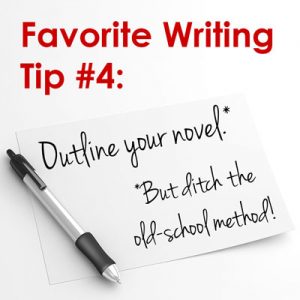
I used to be a pantser.
In fact, I was a pantser before I even knew what the word meant.
I thought to myself, “I really don’t need to outline. I pretty much know that I want my protagonist to start here, and I want him to end up over here, and somewhere in the middle I want some of this to happen.”
Unfortunately, that line of thinking ended up costing me more time than I want to admit, and 70,000+ words (not to mention all of the scenes that I wrote and rewrote and added and changed because I had not yet learned to write ‘as if.’ ) All told, I’m fairly certain I wrote well over 150,000 words on that first attempt at writing a novel so long ago.
Sometime back, I wrote a post on this blog called “A New Perspective on Outlining.” It marked a shift in my thinking on the outlining process, which happened thanks in large part to K.M. Weiland’s book, Outlining Your Novel: Map Your Way to Success.
I won’t regurgitate everything from the earlier post here, but I will say that when it comes to outlining, you need to stop thinking about it the way you learned to do it when you were a kid.
Ditch the old-school method
To me, outlining your novel simply means you are putting thought into your story before you start writing it, and you are jotting down notes about your ideas.
Everyone has their own method.
I mean, if you want to do it the old way, you know, like this, be my guest.
I. Main Topic 1
— A. Sub-topic of main topic 1
— B. Sub-topic of main topic 1
—- 1. Sub-topic of sub-topic 1-B.
—- 2. Sub-topic of sub-topic 1-B.
II. Main Topic 2
— A. Sub-topic of main topic 2
— B. Sub-topic of main topic 2
—- 1. Sub-topic of sub-topic 2-B.
—- 2. Sub-topic of sub-topic 2-B.
For me, I could never stand outlining a novel that way. Aside from the fact that it’s boring, I don’t even think it makes sense for novel-writing.
So how do I do it?
My outlining method begins with index cards on which I brainstorm some of my key scene ideas and start putting them in order. After that, I transfer my scene cards into Scrivener where I’m able to start looking at the big picture.
Then, because I’m writing historical fiction, I set rough dates, along with approximate time of day (early morning, mid-day, afternoon, evening, etc.) to map the events in my story and I put them all on a calendar. Once I’ve done that, I go back in and note the days and times on the scene cards in Scrivener.
From there, I can start writing.
If I run into any issues with building a character, or characters, I get out the trusty old composition book and do a character interview.
As I write my scenes out (which is done from the scene cards), I start developing an idea of how the scenes should be grouped into chapters.
I’ve tried grouping the scenes into chapters before I’ve written them, but I’ve found that doesn’t work very well for me. More than once I’ve been surprised after writing a scene out at how significant it is, and after that point, a scene that I might have previously grouped into the same chapter ends up needing to start the next chapter instead. You can find out more about how I create chapter breaks here.
Do you outline when you begin a novel? Share what works for you below.
(This article was originally published 27 September 2014. It was updated 16 February 2021.)
